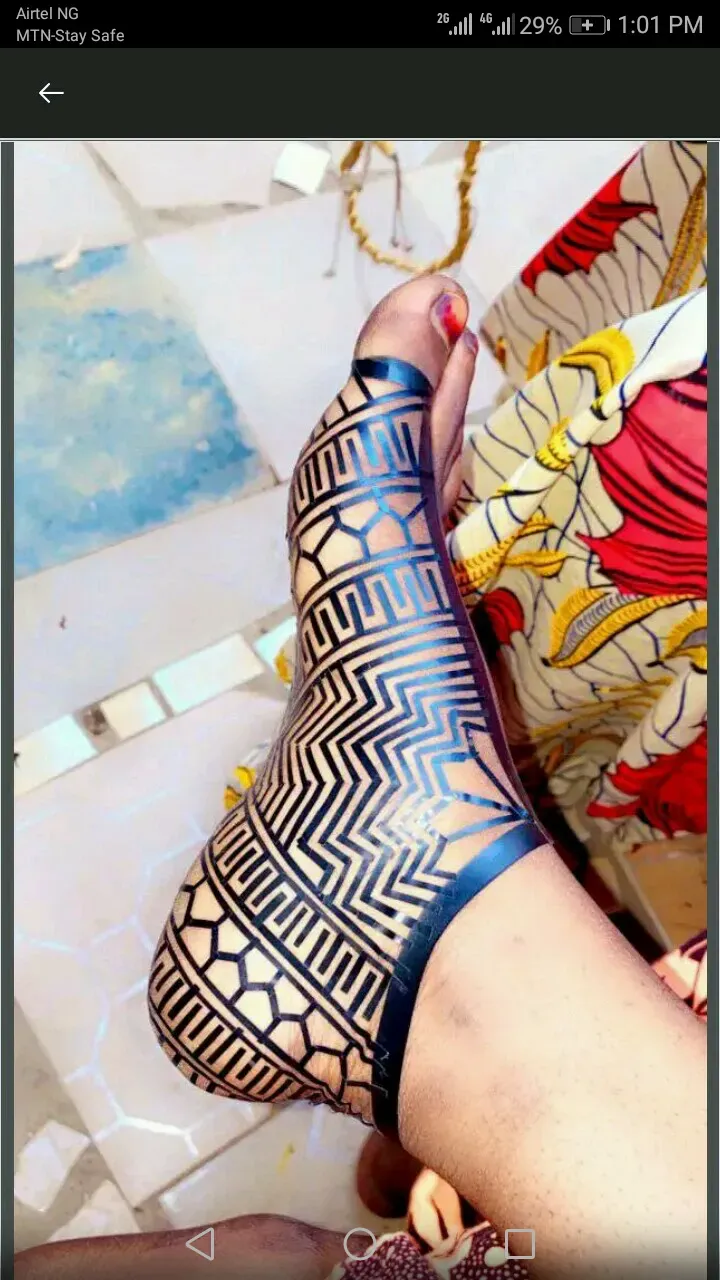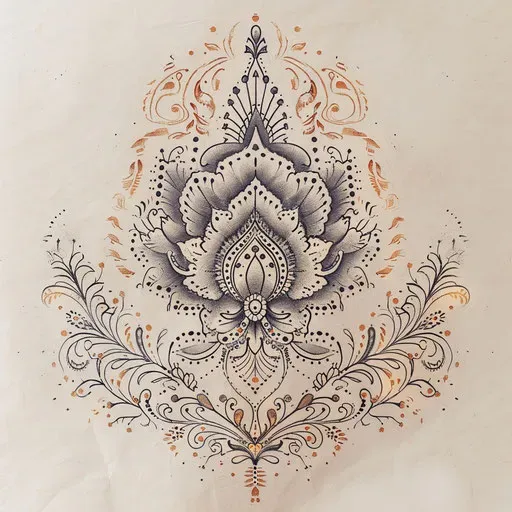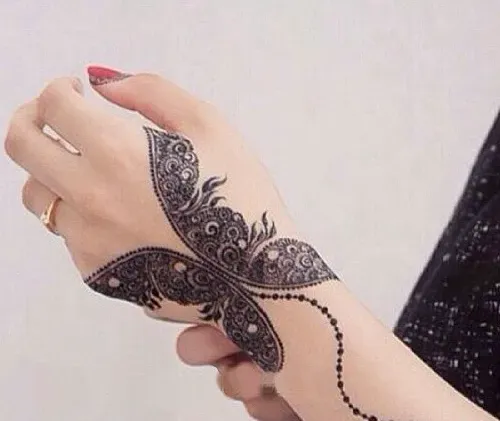Table of Contents
Walk into a festival, a wedding, or just scroll through social media, and chances are you'll spot some intricate, earthy brown patterns adorning hands, feet, or shoulders. These aren't permanent ink, but stunning examples of mehndi tattoo designs. This ancient art form, steeped in history and culture across South Asia, the Middle East, and North Africa, offers a temporary way to express beauty, tradition, and personal style. Forget the commitment of a lifetime; mehndi provides a few weeks of elaborate artistry. But what exactly is this natural dye, where did it come from, and what are the different styles you see? We'll cut through the noise and explore the fascinating world of mehndi tattoo designs, from their deep roots to modern applications, and give you the lowdown on how to appreciate and care for these beautiful, fleeting creations.
Understanding What Mehndi Tattoo Designs Really Are
Understanding What Mehndi Tattoo Designs Really Are
Alright, so when people talk about mehndi tattoo designs, they're usually talking about body art created with henna paste. Think of it as a temporary stain on your skin, not something permanent like a needle tattoo. The paste comes from the dried, ground leaves of the henna plant (Lawsonia inermis). When you apply this paste to the skin, it leaves a reddish-brown stain as the dye molecule, lawsone, migrates from the paste into the dead layer of skin cells. The design itself isn't the 'tattoo' in the traditional sense; it's the resulting stain left behind after the dried paste is removed. It fades over time as your skin naturally exfoliates.
Ever wondered why the color changes?
- Fresh paste: Dark greenish-brown
- After paste removal: Bright orange
- Over 24-48 hours: Deepens to reddish-brown
- Fades: Gradually lightens to orange, then disappears
Tracing the Rich History and Meaning of Mehndi
Tracing the Rich History and Meaning of Mehndi
Ancient Roots and Global Spread
So, where did mehndi tattoo designs even come from? This isn't a new trend; we're talking ancient history here. Evidence suggests the use of henna dates back over 5,000 years to ancient Egypt, where it was used to stain the fingers and toes of pharaohs before mummification. From there, it traveled across trade routes, reaching the Middle East, India, and parts of North Africa. Different cultures adopted it, adapting the techniques and patterns. It wasn't just for the elite; ordinary people began using it for its cooling properties in hot climates and, eventually, for decoration.
Symbolism Woven into Every Line
The beauty of mehndi tattoo designs isn't just skin deep. Every swirl, dot, and line often carries meaning. In many cultures, particularly in South Asia, mehndi is deeply intertwined with celebrations and rites of passage, most famously weddings. Bridal mehndi can cover hands and feet in incredibly dense, intricate patterns, believed to bring good luck, fertility, and protect against evil spirits. The darker the stain, the stronger the love between the couple, or so the saying goes. It's a language of symbols etched onto the skin.
- Lotus Flower: Purity, beauty, enlightenment
- Peacock: Beauty, love, royalty
- Elephant: Good luck, strength, wisdom
- Sun: Immortality, eternal love
- Mandala: The universe, balance, completeness
From Tradition to Modern Expression
While traditional meanings remain significant, the use of mehndi tattoo designs has evolved. What started as cultural or religious practice has also become a form of personal expression and temporary body art globally. You see artists blending traditional Indian motifs with Arabic floral patterns or geometric African designs. Celebrities sport them, and people use them for festivals, parties, or just because they like the look. It's a cool example of how ancient traditions can find new life and meaning in contemporary society, crossing borders and cultures.
Popular Mehndi Tattoo Designs You Might See
Classic Styles: The Heart of Mehndi Tattoo Designs
When you picture mehndi tattoo designs, your mind probably goes straight to the intricate, dense patterns covering hands and feet in Indian bridal mehndi. This style is all about filling space, often starting with a central motif like a mandala or paisley, then layering fine lines, dots, and floral elements that extend up the arms or legs. It's incredibly detailed work, sometimes taking hours for a single application. Arabic designs, on the other hand, tend to be more spaced out and bold, relying on larger floral patterns, leaves, and vines that flow elegantly. They often leave more skin showing, creating a striking contrast between the skin and the dark stain. Think less "full coverage," more "statement piece."
Modern Twists and Fusion Mehndi Tattoo Designs
But it's not all ancient patterns these days. Artists are constantly pushing boundaries with mehndi tattoo designs. You'll see geometric patterns inspired by African traditions, minimalist designs with clean lines and negative space, or even fusion styles that mix elements from different cultures. Some artists incorporate glitter, stones, or white henna (which isn't true henna but a skin-safe body paint) for added flair, although traditionalists might raise an eyebrow at the latter. It shows how this art form is alive and adapting, moving beyond purely ceremonial use to become a versatile way to decorate your body temporarily.
Common elements you'll find in many mehndi tattoo designs:
- Paisleys (mango shape)
- Floral motifs (roses, lotus, vines)
- Mandala circles
- Geometric shapes (lines, dots, grids)
- Peacocks and other animals
How Mehndi Tattoo Designs Differ from Permanent Ink
How Mehndi Tattoo Designs Differ from Permanent Ink
Let's clear something up right away: mehndi tattoo designs are *not* permanent tattoos. This is crucial. While both involve placing pigment onto the skin to create a design, the similarity pretty much ends there. Permanent tattoos use needles to inject ink into the dermis layer of your skin – that's the deeper layer below the epidermis. That ink stays there, well, permanently. Mehndi, on the other hand, uses a paste made from natural henna powder. You apply this paste to the surface of the skin, the epidermis. The dye molecule in the henna stains the dead skin cells on the very top layer. As your skin naturally sheds these cells over a couple of weeks, the stain fades and eventually disappears completely. No needles, no permanence, just a temporary splash of color.
Feature | Mehndi Tattoo Designs | Permanent Tattoos |
|---|---|---|
Application Method | Paste applied to skin surface | Ink injected with needles into dermis |
Permanence | Temporary (fades in 1-3 weeks) | Permanent |
Skin Layer Affected | Epidermis (top layer) | Dermis (deeper layer) |
Removal | Fades naturally as skin exfoliates | Requires laser removal or cover-ups |
Pain Level | Generally painless | Can be painful |
Keeping Your Mehndi Tattoo Designs Looking Their Best
Keeping Your Mehndi Tattoo Designs Looking Their Best
Seal the Deal: Initial Care is Key
you've got your gorgeous mehndi tattoo designs, the paste is on, and you're probably itching to see the color. Patience is your best friend here. The longer you leave the paste on, the darker the stain will be. Aim for at least 6-8 hours, but overnight is even better if you can manage it without making a mess (plastic wrap is your friend!). Once the paste is dry and flaky, resist the urge to wash it off with water. Seriously, don't. Scrape it off gently instead. You can use the back of a knife, an old credit card, or just your fingernails. You'll see a bright orange stain underneath. Don't panic! This is totally normal. The color darkens over the next 24-48 hours as it oxidizes on your skin.
Make it Last: Protecting Your Stain
Now that you've got that lovely dark stain from your mehndi tattoo designs, you want it to stick around for as long as possible, right? The key is minimizing exfoliation. Water, especially chlorinated water like in swimming pools, and harsh soaps are the enemies of a long-lasting stain. Try to keep the tattooed area dry as much as possible. Before showering, you can apply a natural oil like coconut or olive oil to create a barrier. Moisturizing is good, but avoid lotions with chemicals or bleaching agents. Friction also makes it fade faster, so be mindful of clothing or activities that rub against the design.
Things that make your mehndi fade faster:
- Washing dishes without gloves
- Swimming in chlorinated pools
- Using harsh soaps or exfoliants
- Excessive scrubbing or friction
- Applying chemical-based lotions
Wrapping Up Your Mehndi Tattoo Designs Journey
So, there you have it. Mehndi tattoo designs are far more than just pretty patterns; they're a living link to centuries of tradition, a form of celebration, and a temporary canvas for self-expression. We've covered the basics – where they come from, the sheer variety of styles out there, how they differ from permanent ink (thankfully, they fade!), and a few pointers on making them last. Whether you're getting one for a special occasion or just because you appreciate the art, understanding the craft adds another layer to the experience. They won't last forever, but the beauty and cultural resonance of mehndi tattoo designs certainly leave an impression.